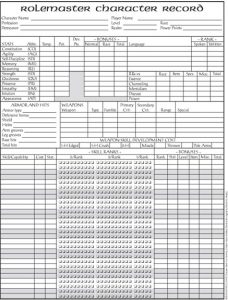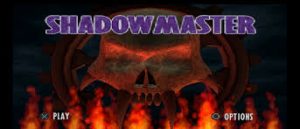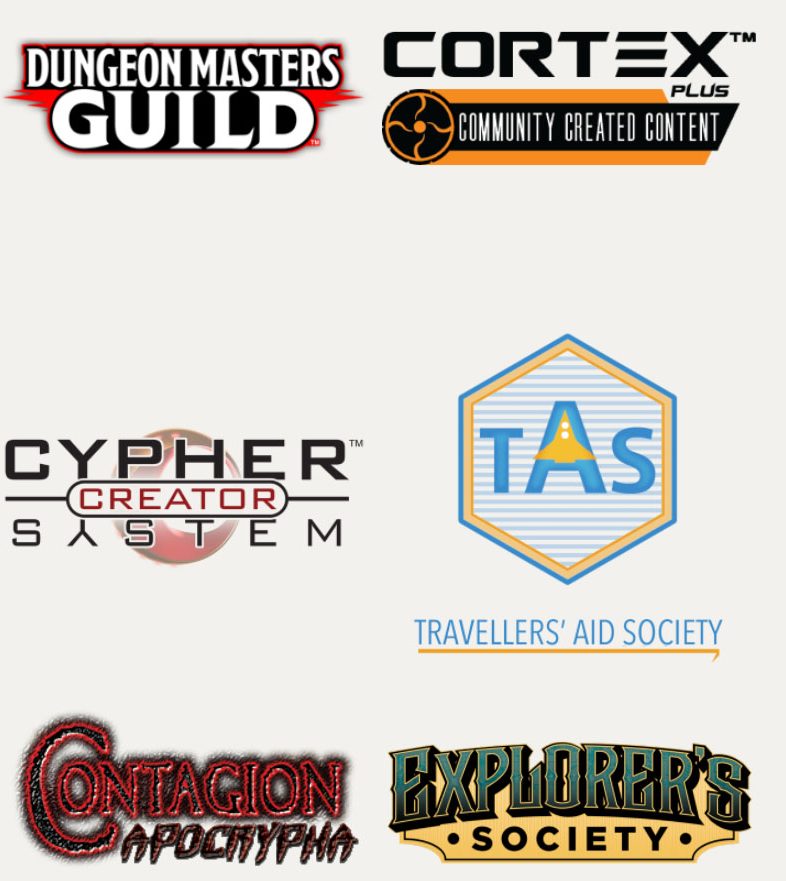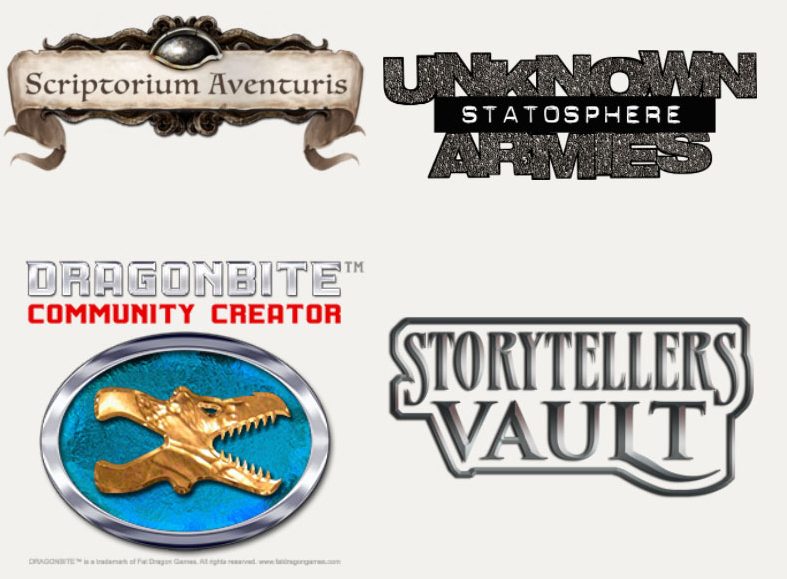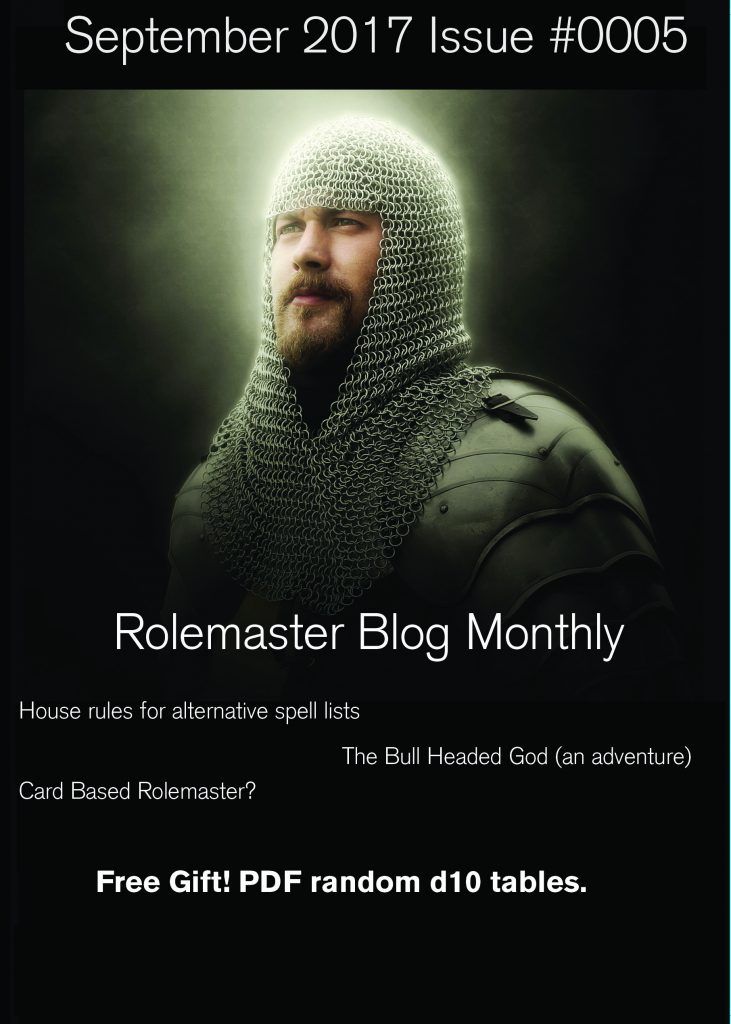This is my reply to Brian’s http://www.rolemasterblog.com/rmu-mission-accomplished/
Well here is a real bunch of thoughts for you…
Firstly, I don’t think the RMU devs have any intention of attracting new players. Through their inaction they have proved their intention. If they had reached out to any one of the other games systems communities and looked for play testers they would have got fresh eyes on the rules. They would have found out if the rules as written are enough to engage those new to RM. They would have started the discussion about the new version of RM with the wider gaming community. They would have raised ICE’s profile all over the world and the on going conversation would have drawn in more people.
They didn’t do that.
There was never any hope that RMU would really unite the RM2 cohort and the RMSS cohort. There are things in each version that do not appeal. None of us ‘need’ RMU as we all have bought and paid for games that fit us like a glove. We have nations of NPCs that would all need recreating and ploughing thousands of hours of work just to get back to where we are now. On top of that there are bound to be parts of RMU you don’t like compared to the version you play now. I don’t like the size rules but the experimental tables on the forum get rid of most of the problems, the complete rewrite of creature law to get rid of normalised stats get rid of more. I have never liked talents and flaws and that is for the most part the last bastion of the size rules. That is just my perspective. Hurin, not to put words in his mouth, will not be using the skill category system. He wants individual skill costs and the RM2 professions. I like his 5AP variant of the combat round as well.
The point is that the existing community are so used to house ruling and the modular design strength of RM that none of us are going to play RMU, we are going to play a personalised variation of the rules. As you say above, you have already decided what will make it into your game and what won’t.
RMU has been designed for people who want a new RM but they want it to be just like the old one but better. The problem is that those people already have a game that is just like the published RM but better, that is their own house ruled version.
Look at us… Brian has his own character law (SWARM), his own spell law (BASiL) and working on his own arms law (that I think should be called BAAL Brian’s Alternative Arms Law).
Intothatdarkness has the modern weaponry rules and unique variation of character law.
Hurin is the most dedicated to RMU but will also the biggest issues with Character & Arms Law.
Edgltd doesn’t even play RM.
We haven’t seen Warl on the forums for a while but I have played in his game and it is very heavily house ruled when it came to Character creation, combat and magic. What else is there?
RMU cannot and will not meet all these peoples’ needs. It cannot be a unifying force.
So here is a hypothetical question for you.
If you sat down at the gaming table and your character has the right stats in the right range (1-100). They had the right magnitude of stat bonuses the right number of skills and those skill to the right level of competency do the rules that creating the character matter?
We all have our own hybridised versions of Character Law and yet all our characters fight the same monsters in Creatures and Treasures in the same numbers, deliver the same criticals and take the same wounds. Do the character creation rules actually matter?
Brian has SWARM, it sounds like OLF on the forums and I are going down the same road with Spell Law and the open and closed lists. Spectre711 on the forums does not even use spell law, they exclusively use Elemental Companion, then does it matter what the source of the characters spells are (from a rule book perspective) as long as they are all on the same power level regarding ranges, durations and effects?
I am creating a new monster book based upon creating all the D&D 5e SRD monsters into Rolemaster compatible monsters. This will mean that I can produce completely statted out adventures without using any ICE intellectual property. I can also share that document so other adventure writers will be able to do the same. The book will be published under the WotC license as I am using their intellectual property. Edgltd said himself in a comment only this week that RM could go back to its roots and engage with the 5e and Pathfinder community.
Long ago I used to write this blog completely on my own, producing two posts a week, week in week out. In 2015 I produced this post http://www.rolemasterblog.com/roleplaying-games-do-not-exist/ and I still hold to that idea. The problem for RMU and ICE is that if the experienced players do not need Character & Arms Law, Spell Law and Creature Law and none of these have been designed to be attractive to new players nor to draw in players of other same genre games then who is going to buy into RMU?
I think ICE are going to have to do the most outstanding marketing task I have ever encountered and I am a lover of marketing, both in my professional life and privately. I would love to be in charge of marketing RMU. The problem is that I would have wanted to start 5 years go. There’s a well known joke about a tourist in Ireland who asks one of the locals for directions to Dublin. The Irishman replies: ‘Well sir, if I were you, I wouldn’t start from here’.
Things I would have done…
I would have posted invitations to the first beta on every major gaming community. To give you an idea scale I rarely ever see more than 7 names and as many as 15 guests as being active on the ICE forums. Right now there are 3 registered users and 11 guests the best ever was 276 back in 2006. On the first D&D forum I look at there were 191 members and 398 guests right now and the best ever was in March this year 18344. The first War Hammer forum I looked at had 600 users online at that time.
I would have bundled up a play test set into a single zip file and put it on RPG now as a public play test. By letting people download it that way you can automatically send out updated version and you are immediately building a marketing contact list for when you want to sell them the finished rules (at a hefty discount but everyone appreciates a thank you).
I would not have produced multiple hundred page PDFs for each book. Each chapter would be a separate document so they are easy for the tester to read and digest. You can then hold a separate discussion on a chapter by chapter basis with your testers. That sounds like a Dev action but it is actually marketing. The more people you engage with the more good will you will engage.
There should be a playtest adventure and playtest pregen characters as a single download. This will get people actually play testing your game without having to read and understand 1200 pages of text. Play first and look under the hood second. You can commission some great evocative art for that first adventure and the characters to fire the imaginations of these first play testers. Art does not have a short shelf life. You can reuse it in the final paid product so nothing is lost.
That art is the only expense in everything I have just outlined. You can pick up some great art on Deviant for $20 a piece so there is no real need to spend more than $200 in total. I would set myself the aim of getting 300 active play test groups. That then would show up the flaws in the system but also bring in 300 advocates for the new game. That isn’t a limit either 300 would be my failure test. Any less than that and I would have considered my efforts a failure. There is no real maximum limit for the number of testers you could reach. Over time that community is likely to grow as more people discover the game. The more testers you get at the beginning the bigger their online footprint becomes.
With a large testing community the flaws will be found faster, the rules refined faster and the game would have been brought to market faster. I would have expected it to be on the shelves back in 2013. By now we should have SMU and some companions out!
I don’t think that is overly optimistic. I do recognise that this is a rambling mess of a post. I think the nub is that RMU isn’t really for us, it is for the next generation. That is its mission. Whether it is accomplished or not remains to be seen.




